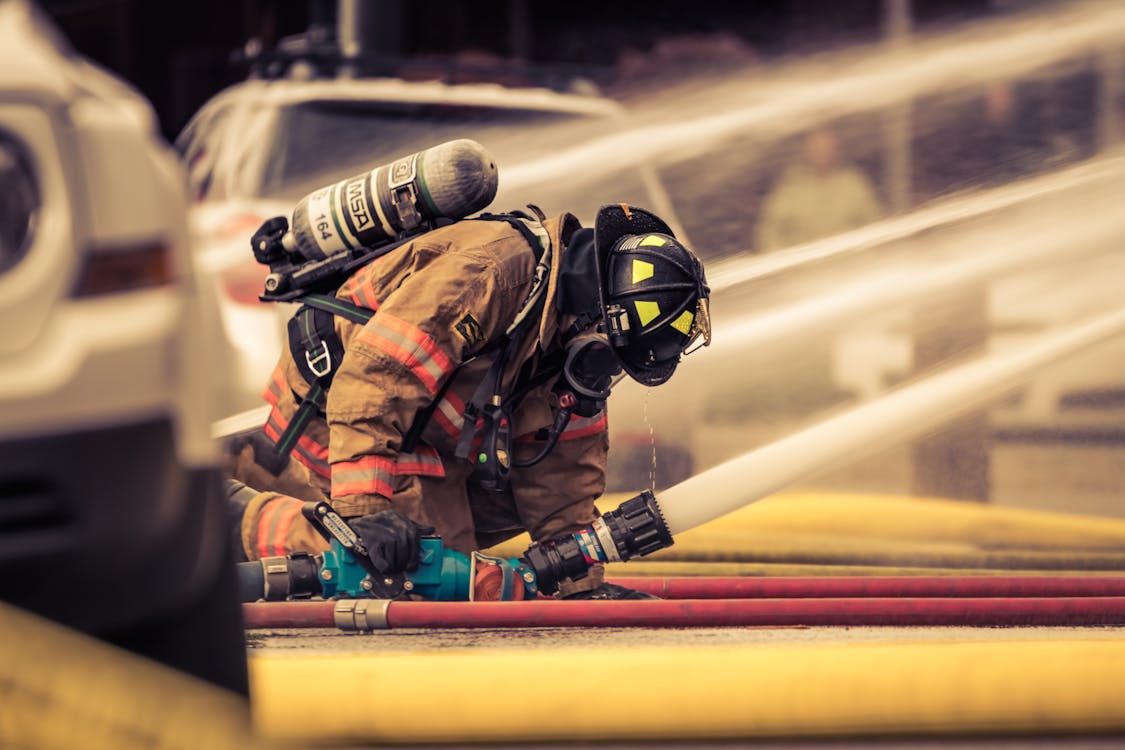Taken from June 22nd’s and 29th’s Tuesdays with Tom videos. Edited for length and clarity.

Photo by Kevin Bidwell on Pexels
The California wildfire season has begun. This must be taken seriously now, especially with the disasters we’ve had in the last few years. There are several different items to be worried about:
- Food Supplies
- Generators
- Utility Shutoffs
- Relocation Sites
- Transportation Options
- Staff Training
Food Supplies
You’re supposed to have an emergency food supply: three days worth of perishable foods as well as seven days of non-perishable food. Title 22 says you only need two days of the former, but ever since Hurricane Katrina, you need to have three days of perishable foods.
The thing is with food, it needs to be labeled.
If you’ve got shelves full of food and it doesn’t say, “Emergency Food,” on it, Licensing will figure that you don’t have any. Have it labeled on the shelves as emergency food supplies in both your refrigerators and your dry storage area.
Menu
Have a menu, especially since we’ve got PG&E shutting off the power from time to time due to being worried about fires. So, you want to have a menu and be prepared. You may be two or three days without power, so what food are you going to use and when are you going to use it?
It’s important to note that the emergency menu is going to be different from the menus you use during a normal week.
Generators
If you don’t already have a generator, you need to get one.
You want to be able to run your refrigerator(s), freezers, and, during this hot summer, air conditioners. You don’t have to run a generator for the whole facility, depending on your budget, but definitely have a generator available, especially with PG&E shutting the power off.
Be sure the staff is trained on how to use the generator and be able to hook it up. You may have to get some special electrical connections to hook that up to your freezers and refrigerators. You also need to know what kind of fuel your generator takes, whether it be diesel or gas.
Utility Shutoffs
You need to know where your utility shutoffs (gas, water, etc.) are located.
Train the staff on this when they are first hired on. Show them where the utility shutoffs are, as well as what tools they need to shut them off (gas often needs a special wrench, as well as water). Many electrical boxes are locked, so be sure that the employees have keys to access them.
Relocation Sites
You have to have agreements with relocation sites and then you have to know where they’re at. You want to have maps on how to get to the relocation sites, as well as the written address. Take your key employees, especially anybody that’s going to be driving the van, and go visit the relocation sites.
Licensing wants a relocation site to be at least 25 miles away. It would be a plus if you could do that in both directions. When Oroville was flooding and they thought the dam was going to break, they shut the freeway heading southbound. So they had everybody in the town evacuate to the north. This is why it’s good to have a relocation site in both directions.
A lot of facilities choose to shelter in place, but if the whole town is on fire, like Paradise, you’re not staying in place. So you want to have a relocation site at least 25 miles away.
Transportation Options
You need vans and/or buses.
It’s possible to get agreements with the adult facilities that run day programs, as those buses/vans are often available. But you need to have this pre-arranged.
If you’re using your own transportation, there are a couple of things of note. One is that they should be easily accessible. If the employees have to take fifteen minutes to go get the van from your house, it may be too late by the time they get back. Time is of the essence, especially in some of the fires we’ve had in recent years (like the one in Santa Rosa).
In the Paradise fire, many residents were loaded onto charter and city buses, but there was no way to get the wheelchairs, walkers, and carts on board in a timely fashion.
Besides the residents and staff, you need to take the medications and the medication carts. You need to take their personal items, their wheelchairs and their walkers, and their go-bags if they have them. Be sure you also have the resident records, the client records, and then contact information.
Make sure you have adequate room for that on transportation.
Fuel
“Half is the new empty.”
After the Oroville dam scare, billboards cropped up in and around the town with that phrase on it. They’re talking about your fuel. So keep the vans and buses, cars, at least three-quarters full of fuel 100% of the time.
When Paradise and Oroville were evacuated to Chico, what is normally a half-hour drive was taking 5-hours. So you can imagine if you only had a quarter tank of gas, you may not have been able to make it.
Staff Training
Training is critical.
It’s a little bit different depending on whether you’re an Adult Facility, or if you’re an Elderly Facility (with or without dementia residents). Regardless, document that training. Licensing is going to want to see the records where the staff was trained. So get them trained, look up your regulations on training requirements, and train the staff.
That isn’t something you want to put off.

0 Comments